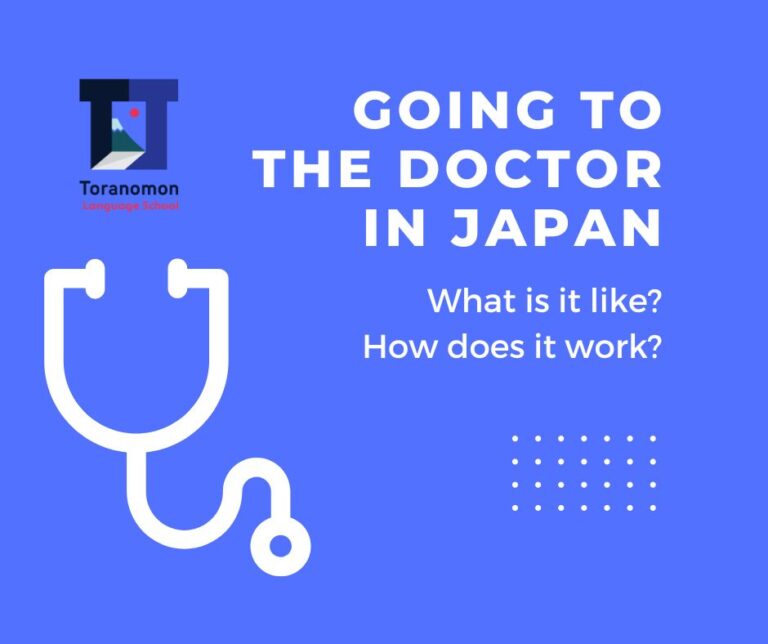The first time you go to the doctor in Japan, you might be a little intimidated wondering how everything works, and what you should do. This article will outline the procedure for going to the doctor in Japan, as well as teach you some useful vocabulary and phrases.
If you have a serious medical problem and you cannot fully communicate in Japanese, we recommend skipping the local doctor’s clinic and going directly to a hospital where they can provide an interpreter. Going directly means you will incur a fee for not having a referral. This is usually 5,000-10,000 yen. Otherwise, you can find an English-speaking clinic.
Some English-speaking facilities are:
- International Health Care Clinic in Shinbashi – They take Japanese health insurance
- Tokyo Medical and Surgical Clinic in Shiba-Koen – They do not take Japanese health insurance
- Japanese Red Cross Medical Center in Hiro-o – They take Japanese health insurance
- St. Luke’s International Hospital in Chuo – They take Japanese health insurance
- Otsuka Medical Clinic in Yushima – They take Japanese health insurance
What is the procedure at a local Japanese medical clinic?
Usually the procedure is similar to as follow:
- There is no need for an appointment, you can simply show up.
- When you arrive, hand over your health insurance card to the receptionist and inform them that you don’t have an appointment
- They will hand you a form to fill out about your symptoms and other personal information. They will want to know how long you have had said symptoms.
- Many clinics have an English form but not all do. If you cannot read the form, try an app like Google Lens. If you can’t write in Japanese, you can usually fill it in in simple English.
- They will check your temperature. These days people with fevers must wait in another room, and can usually only be seen before 11am in many clinics.
- Hand in the form and they will ask you to wait.
- Eventually you will be called to see the doctor.
- Doctors often tend to rush through patients in Japan, so make sure you tell them all of your symptoms clearly. They may do some body checks depending on your case. They will probably tell you they will prescribe X or Y, and then you will go back to the waiting room.
- Wait in the waiting room until you are called to the front desk. They will give you the bill/receipt, your prescription, and return your health insurance card. They will also give you a card for the clinic – Japan is not paperless yet!
- Go to the pharmacy to collect your prescription. Make sure to do this within three days or it will expire!
Useful vocabulary and phrases
byouin – hospital
netsu ga arimasu – I have a fever
seki ga demasu – I have a cough
hanamizu ga demasu – I have a runny nose
kaze ga arimasu – I’ve got a cold
memai ga shimasu – I’m dizzy
zutsu ga arimasu or atama ga itai – I’ve got a headache
itai – hurts/pain
onaka ga itai – I have a stomachache
nodo ga itai – My throat hurts
koko ga itai – It hurts here (touch)
mune – chest
ashi – foot, leg
kubi – neck
senaka – back
geri – diarrhea
benpi – constipation
hakike – nausea
kusuri – medicine
shinsatushitsu – examination room
yoyaku – appointment
shinsatsuken – patient ID card
hokenshou – insurance card

